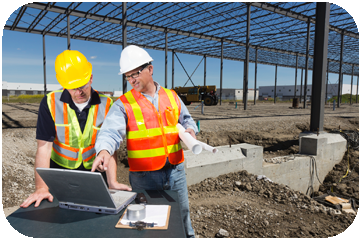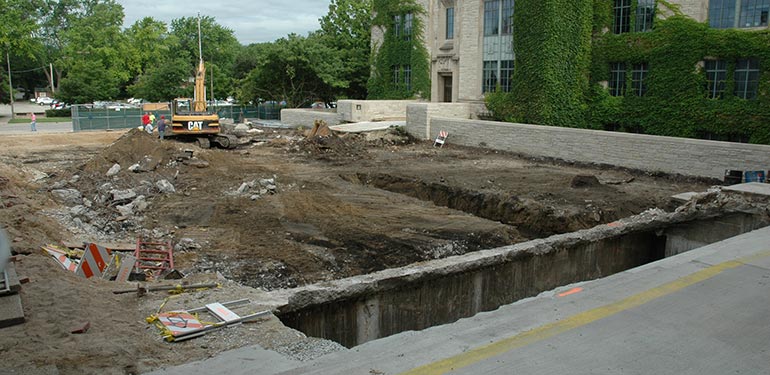Experienced Geotechnical Geologist for In-Depth Ground Investigations
Experienced Geotechnical Geologist for In-Depth Ground Investigations
Blog Article
Just How Consulting Engineers Enhance Geotechnical Engineering Projects: Insights Into Their Expertise, Methodologies, and Collaborative Approaches
Consulting engineers are critical in boosting geotechnical design tasks, applying their specialized understanding to navigate the intricacies of subsurface conditions. Their collective approaches foster interaction amongst varied job stakeholders, ultimately shaping the task's trajectory.
Role of Consulting Engineers
The proficiency of speaking with designers in geotechnical engineering is fundamental to the effective implementation of building projects. These specialists play a pivotal role in analyzing dirt and rock properties, which are crucial factors affecting layout and construction choices. By conducting comprehensive website examinations, getting in touch with designers accumulate crucial data that informs the style process, making certain jobs are improved secure and suitable ground.
Consulting designers also supply invaluable understandings into threat administration (geotechnical geologist). They identify potential geotechnical risks, such as landslides, dirt liquefaction, and settlement concerns, allowing stakeholders to implement reliable mitigation approaches. Their expertise help in maximizing structure designs, which can lead to considerable cost financial savings and enhanced security
Additionally, consulting designers offer as a vital web link in between project proprietors, designers, and contractors. Their capability to translate complex geotechnical information into actionable recommendations fosters cooperation and promotes notified decision-making throughout the job lifecycle. This multidisciplinary technique not only boosts job performance yet additionally makes sure compliance with regulatory criteria and finest practices.
Key Techniques in Geotechnical Design

One primary methodology is site investigation, which involves carrying out field tests and laboratory evaluations to collect information on subsurface conditions. Strategies such as Requirement Infiltration Testing (SPT) and Cone Infiltration Screening (CPT) are commonly utilized to examine soil stratigraphy and strength. In addition, geophysical methods, including seismic and electric resistivity studies, supply non-invasive means to assess subsurface attributes.
One more vital technique is numerical modeling, which allows engineers to simulate various circumstances and predict exactly how soil-structure interactions will certainly act under different loading conditions. Limited Element Evaluation (FEA) is a common method utilized in this context.
In addition, the layout of foundations, retaining structures, and earthworks depends heavily on these methods - geotechnical geologist. By incorporating advanced logical tools with area information, seeking advice from engineers can develop tailored solutions that address certain project challenges, eventually contributing to the security and safety and security of building and construction jobs
Relevance of Soil Analysis
Soil evaluation serves as a foundational component in geotechnical design, providing vital insights right into the physical and chemical buildings of soil required for efficient construction planning. Understanding soil attributes is critical for determining its load-bearing capacity, drain habits, and potential for negotiation or instability. Comprehensive soil investigations, including tasting and research laboratory testing, help identify parameters such as dirt kind, dampness content, More Bonuses density, and shear strength.
These analyses inform the option of ideal building methods and materials, ultimately affecting task safety and security and longevity. For circumstances, cohesive dirts may require various structure designs contrasted to granular dirts, requiring customized design services. Soil evaluation help in recognizing impurities that might present threats to human health or the setting, enabling for the growth of reduction strategies.
Including dirt analysis into the early phases of project advancement assists to reduce unpredicted challenges, making certain that engineers can anticipate and resolve prospective issues before they intensify. By establishing a thorough understanding of the site conditions, consulting designers can optimize style effectiveness and decrease costs, therefore enhancing the overall success of geotechnical design tasks.
Collaborative Methods in Jobs
Successful geotechnical tasks often depend upon joint strategies that combine varied experience from different self-controls. Effective partnership among getting in touch with designers, geologists, environmental researchers, and building specialists is essential for addressing complicated difficulties and maximizing job results. By leveraging the unique abilities and understanding of each employee, tasks can take advantage of a holistic understanding of the website problems, regulatory needs, and engineering restrictions.
Normal interaction and interdisciplinary conferences promote the sharing of insights and foster a society of teamwork. These collective initiatives make it possible for the recognition of possible dangers early in the project lifecycle, enabling for timely reduction approaches. Incorporating comments from stakeholders, consisting of regional areas and regulatory firms, makes sure that all perspectives are considered, improving task acceptance and conformity.
Furthermore, the assimilation of sophisticated modern technologies, such as Geographic Details Equipment (GIS) and Structure Information Modeling (BIM), additional boosts cooperation. These devices permit the real-time sharing of information and visualization of geotechnical problems, advertising great site notified decision-making. Inevitably, a collaborative strategy not only enhances project implementation but likewise lays the structure for ingenious services to complicated geotechnical design challenges.
Influence On Project End Results

Consulting designers utilize innovative approaches such as risk analysis and anticipating modeling, which boost the accuracy of project projections. Their capacity to integrate ingenious modern technologies, like geotechnical instrumentation and information analytics, further refines the style and building and construction processes. Therefore, projects experience boosted performance, minimized prices, and decreased hold-ups.
Additionally, cultivating reliable communication and cooperation among staff member enhances problem-solving capacities. When obstacles arise, a joined front enables swift identification of options, avoiding potential setbacks. Ultimately, the joint efforts of consulting designers add to greater top quality end results, ensuring that projects fulfill both regulative requirements and client assumptions.
Verdict

Report this page